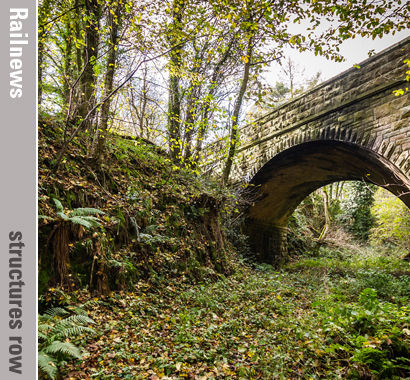PLANS by Highways England to demolish more than a hundred structures on disused railways have been condemned for potentially preventing future railway reopenings.
Responsibility for non-operational railway land was transferred to the Department for Transport’s Highways Agency and then to Highways England after the British Railways Board had been finally wound up in 2013.
Many structures, particularly bridges, must still be maintained for safety reasons, even though they are no longer on active railway routes, and Highways England is currently planning to remove 134 of these structures to reduce the risks they present.
But the plan has been criticised by campaigners because it could make future reopenings less likely and also block heritage trails used by cyclists and walkers.
The campaigners say Highways England has already been infilling some bridges since it took over responsibility for the Historical Railways Estate. One of them, at Chilcompton in Somerset, has blocked a future extension to a line operated by the Somerset & Dorset Railway Heritage Trust despite, it is claimed, Mendip District Council having a policy that protects the former trackbed.
Attracting an annual budget of around £10 million, the HRE is generally inspected annually and repaired on a ‘reactive’ basis, maintenance being carried out only where it is needed for safety reasons. In a 2016 report Highways England made clear its preference to ‘significantly reduce the level of liability and risk to the HE and DfT’ by stepping up demolition and infilling. The number of structures within the Estate would be reduced by between 10 and 15 per cent, or up to 480 structures.
One campaigner has described these plans as ‘finishing off what Dr Beeching started’.
The HRE Group, an alliance of engineers, cycling campaigners and greenway developers, maintains that no assessment is being made of the strategic value of the affected structures for future transport use. It also alleges that ‘attempts are being made to infill most of them under permitted development powers to prevent scrutiny through normal planning processes’.
Highways England said: ‘To maintain the safety of communities living near to Historic Railway Estate structures, and the drivers who use the roads that cross them, we are planning to infill 115 bridges and remove 15 structures over the next five years.
‘Most of the bridges earmarked for infilling are over 100 years old and were never designed to carry the weight of modern traffic.
‘Local highway authorities have responsibility for applying weight restrictions, closing the roads, or restricting traffic. Around 200 of the public road bridges managed by HE/HRE have failed their most recent structural assessment (BD21) but haven’t had any restrictions implemented. Therefore, our planned infilling is the safest and most appropriate option and will maintain access across the structure.
‘Ten of the 15 removals are abutments which had their bridge span removed several decades ago and no longer serve a purpose.
‘We’ve contacted all local authorities affected to advise them of our plans and to see if they have any use for the structures. In addition, we have arranged for seven structures to be transferred to local authorities which aspire to use them for cycle routes.’


